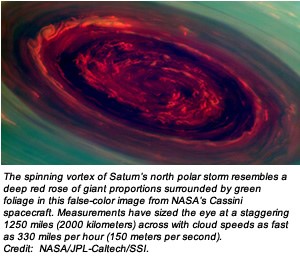Do Extra-Terrestrial Bodies Have An Effect On Our Climate?
Interplanetary Research Studies have continued with new and independent scientists putting forth theories to prove
The scientists predict that gravitational forces from these planets have large size changes on the Earth’s climate, in terms of geological time-scale. Considering Earth at the time of its formation, when it was yet to solidify and form properly, the effects of these planets would have been much more than are seen now. Using mathematical simulations, Mitrovica found that around 20 million years ago Earth passed through a gravitational resonance phase associated with the orbits of Jupiter and Saturn, which in turn influenced the way Earth’s axial tilt changed during that period. This rapidly changing tilt of young Earth would have been a result of a number of factors, external and internal, with gravitational effects from titanic planets like Jupiter one of the influential forces driving its deformation.
The study is financed by

A New Approach to Interplanetary Effect on Climate Change
A recent attempt to understand climate change in reference to celestial involvement is offered by University of Houston Planetary Scientist, Liming Li and his team. In October 2017, climatologists and scientists from the domain of physics, environment and planetary geology discussed interesting ideas put forth in ‘Earth’s Changing Global Atmospheric Energy Cycle in Response to Climate Change’ by Yefeng Pan et al in the journal Nature Communications [2]. The research is focused on how energy capital of the Earth is intensifying, causing a drastic increase in the incidences of storms as a result of additional potential energy accumulated inside the planet’s reservoir which desires immediate discharge. This excess energy is the cause of kinetic storms all over the central Pacific Ocean, where earlier too, scientists had discovered intense tropical cyclones on the rise. The team has numerated all evidences through a calculated Lorenz energy cycle, after the MIT scientist Edward Lorenz gave the concept in 1955. This energy cycle is acknowledged to influence climate and weather. It is a series of complex formula system that is related to how potential energy is converted to kinetic energy in the atmosphere. Through the study of Saturn’s biggest moon, Titan, whose energy budget is balanced just like Earth’s, Li observed how a giant storm on Saturn, thousands of kilometers wide, changed how the planet absorbed solar energy. Scientists working on this project believe that the same planetary energy effect can be applied to Earth to know variations in climate over an extended period of time.
The study suggests, through careful analysis, that the total mechanical energy of the planet i.e. summation of mean potential and kinetic energies and eddy potential and kinetic energies, is increasing, resulting in mass imbalance in the energy flow. This imbalance creates disproportionate low and high pressure belts in sensitive zones around the globe, thus making those areas susceptible to variations ranging from synoptic scale events to mesoscale events within a short duration. This infers that atmospheric phenomenon usually happening at synoptic scales would increase in frequency and relate close to the mesoscale events. Thus, a huge storm operating in a short interval is bound to be the new mutation over the affected location.
Earlier, just 10-year time scales were studied which were limited in their approach of determining future global warming impacts. But now Li and his team are researching climate change over a 35-year time period, taking into consideration the data on wind and temperature fields gathered by ground-based observatories and satellites and in particular effects of large scale storms on celestial systems like Saturn. Till date, the results they found suggest that increasing potential energy reservoir causes a positive trend in storm occurrences over many identified hotspots globally. Another group of scientists have successfully completed the Lorenz energy budget of Mars which will help understand how it changed from a warm wet planet to the presently cold and dry world. Similar studies of other cosmic bodies are bound to reveal many facts that will help us understand climate change on Earth profoundly.
Concluding
It is safe to conclude that effects of extra-terrestrial bodies on Earth’ climate is a fact and not a theory. Studies relating the two have been going on for some time and new approaches add-on to the existing studies, making us aware of the inter-connection between celestials. Earth is susceptible to forces that would cause abrupt climatic events even from beyond. The difference, now, is the ability to research past and present phenomena to predict future climate variations. The only reassurance, if this is a reassurance at all, is that we would be able to discern how life on this blue planet would end [3].
References
- https://www.sciencedaily.com/releases/1997/12/971218090305.htm
- Yefeng Pan, Liming Li, Xun Jiang, Gan Li, Wentao Zhang, Xinyue Wang, Andrew P. Ingersoll (2017) Earth’s Changing Global Atmospheric Cycle in Response to Climate Change. Nature Communications 8: 14367 https://www.nature.com/articles/ncomms14367
- https://www.ijariit.com/manuscript/earths-climate-influences-from-extra-terrestrial-bodies/
Author:
Ms. Adeela Hameed, M.Sc. EVS student at AIES, Amity University

